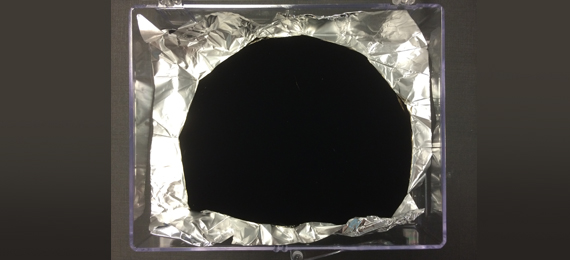
- Vantablack is the acronym for Vertically Aligned Nanotube Arrays-Black. It is made up of a billion carbon nanotubes that give a velvety appearance. Each of these nanotubes is nearly 10,000 times thinner than human hair.
- Vantablack isn’t a color but a material. It is one of the darkest colors synthesized in the laboratories. This material is extremely expensive and cannot be purchased just like other lab-synthesized materials.
- Vantablack is a layer of long nanotubes arranged closely together. When light rays are passed perpendicularly through the material, it absorbs the rays instead of reflecting it.
- Vantablack has several applications in space science and rocket launch.
- BMW’s new launch is an X6 painted in Vantablack. The color of the car is so dark that it has received exciting reviews.
- Vantablack has great applications in the automotive industry. While mostly used for painting, this material is also found to be of good use in increasing the efficiency of optical sensors even in poor lighting.
- The name Vantablack has been trademarked by Surrey NanoSystems Limited, a nanosystem manufacturing company but was initially developed by the National Physical Laboratory in 2014.
- Talking about the properties of Vantablack, it is elastic, heat resistant, shock resistant, and insoluble in water. The material is highly absorbent and hence used in several infrared cameras to absorb stray light. It absorbs about 99.965% of the light incident on it. When kept on a crushed silver foil, the material still appears flat and void of any shape. In simple words, Vantablack typically gives us an experience of looking at a black hole.
- The exact cost of a tin of Vantablack paint is unknown as it takes around two days in a lab to prepare it which makes it more expensive than gold and diamonds.
- It conducts heat seven times more than copper.